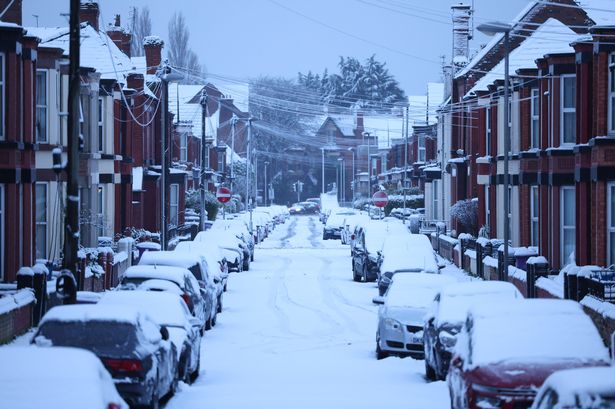The heavy snowfall blanketing regions across the UK, particularly Lancashire, Cumbria, and the Lake District, is predicted to cause significant disruption for a second consecutive day. The accumulation of snow, coupled with freezing temperatures, creates a dangerous combination that raises the likelihood of widespread travel delays, stranding countless vehicles and leaving many homes and businesses without power. Rural communities are particularly vulnerable, facing the increased risk of complete isolation as roads become impassable and communication networks are disrupted. Emergency services are bracing for a surge in calls for assistance and are urging residents to avoid all but essential travel. The current conditions are described as treacherous, and authorities are working tirelessly to clear roads and restore power, but the severity of the weather is hampering these efforts.
The primary concern is the safety and well-being of those stranded in their vehicles or trapped in their homes without power. Prolonged exposure to the frigid temperatures can quickly lead to hypothermia, a life-threatening condition. Emergency services are prioritizing reaching these vulnerable individuals, but the challenging conditions are making access difficult. Authorities are advising residents to stay indoors, conserve energy, and check on vulnerable neighbors. Community centers and other designated warming centers are being opened to provide refuge for those in need. The prolonged nature of the snowfall and the predicted sustained low temperatures mean that this disruptive weather event could continue to impact the affected regions for several days.
Travel disruptions are expected to be widespread and prolonged. Major roadways are likely to be closed, and even those that remain open are likely to be treacherous due to ice and snow accumulation. Public transportation services are also expected to experience significant disruptions, with cancellations and delays anticipated. Airports in the affected regions are likely to experience flight delays and cancellations as well. Individuals planning to travel are strongly advised to check the latest travel updates and to consider postponing their journeys if possible. Even seemingly short trips can quickly become hazardous in these conditions, putting both drivers and passengers at risk.
The heavy snow is also placing a significant strain on power grids. The weight of the snow can cause power lines to snap, leading to widespread outages. Strong winds can exacerbate this issue, further increasing the risk of power failures. Power companies are working around the clock to restore power to affected areas, but the challenging conditions and the scale of the outages are making this a complex and time-consuming process. Residents experiencing power outages are advised to conserve battery power on their mobile devices, use flashlights instead of candles, and avoid using generators indoors due to the risk of carbon monoxide poisoning.
Rural communities face a heightened level of vulnerability during severe weather events like this. Their often remote locations make them more difficult to access for emergency services and utility crews. The impassable roads can cut off access to essential supplies and medical care. Furthermore, communication networks can be disrupted, making it difficult for residents to contact emergency services or loved ones. Local authorities are working to ensure that these communities receive the support they need, but the challenging conditions are making this a significant undertaking. Community resilience and neighborly support will be crucial in helping these isolated areas weather the storm.
The prolonged and severe nature of this weather event underscores the importance of preparedness. Having an emergency kit readily available with essential supplies such as food, water, blankets, and a first-aid kit can be crucial in these situations. Staying informed about weather updates and heeding warnings from authorities is essential. Checking on vulnerable neighbors and offering assistance where possible can make a significant difference in the well-being of the community. By taking appropriate precautions and working together, communities can mitigate the risks associated with severe winter weather and ensure the safety and well-being of all residents. The continuing snowfall and freezing temperatures mean that vigilance and preparedness will be critical in the coming days.














